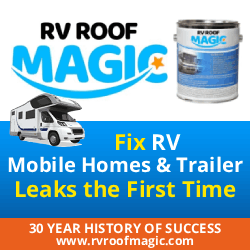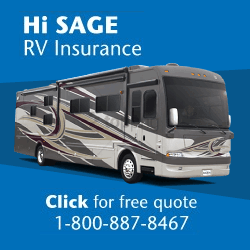What First-Time RV Buyers Need to Know
Buying a used RV can save you thousands compared to a brand-new model, but only if you know what to look for. A thorough RV inspection checklist will help you avoid hidden problems, negotiate a fair price, and feel confident in your purchase.
This guide covers everything you need to inspect before buying a used RV, whether it’s a motorhome, travel trailer, or fifth wheel.
Why an RV Inspection Matters
Purchasing an RV is a big investment. Without a proper inspection, you risk buying an RV with hidden water damage, electrical issues, or worn-out appliances. By following this used RV inspection checklist, you’ll:
- Identify costly repair issues before buying
- Ensure the RV is roadworthy and safe
- Protect yourself from overpaying
- Gain peace of mind with your investment
👉 For more details on professional inspections, check the National RV Inspectors Association (NRVIA).
First Impressions: Exterior Inspection Checklist
Start by walking around the entire RV slowly. Take in the big picture, and do not rush this step.
✅ Roof & Seals – Check for cracks, soft spots, or leaks around vents and A/C units. Learn how to spot issues with this RV roof maintenance guide from Camping World.
✅ Sidewalls & Paint – Look for delamination, bubbling, or fading.
✅ Windows & Doors – Inspect seals, locks, and latches for water intrusion.
✅ Undercarriage & Frame – Check for rust, cracks, or weld issues.
✅ Tires & Axles – Verify tire age using the DOT code, check tread depth, and confirm suspension condition.Pro Tip: Bring a flashlight and inspect underneath the RV for rust, frame damage, or signs of leaks.
Interior Inspection Checklist
✅ Floors & Ceilings – Step firmly to find soft spots that may indicate water damage.
✅ Walls & Cabinets – Look for discoloration, mold, or delamination.
✅ Windows & Seals – Test for smooth opening/closing and leaks.
✅ Bathroom & Plumbing – Run faucets, flush toilets, and check for leaks. The RV Travel Plumbing Guide has additional tips.
✅ Appliances – Test refrigerator, stove, furnace, A/C, and water heater.Mechanical & Electrical Systems
✅ Engine & Transmission (for motorhomes) – Check fluids, belts, and service records.
✅ Generator – Test under load and review maintenance logs.
✅ Battery Bank – Verify voltage, age, and clean connections.
✅ Electrical System – Inspect breaker panel, outlets, and lights. See FMCA’s RV Electrical Basics for troubleshooting.
✅ Propane System – Inspect for leaks and ensure regulators function properly.Electrical & Power Systems
Power systems are a must-check before buying. Do not just assume the lights work.
- Test batteries (both house and engine if motorized)
- Plug into shore power and make sure it connects properly
- Turn on lights, outlets, fans, and appliances
- Operate all slide-outs
- Run the generator and inverter (if installed)
Tip: Ask about recent upgrades to solar or lithium systems—they are a big plus!
Plumbing: Water Systems & Leaks
Water damage is one of the most expensive problems with used RVs. Be thorough.
- Run all faucets, shower, and toilet
- Look under sinks and around plumbing for leaks
- Test the water pump and water heater
- Smell and inspect tanks (fresh, grey, black)
- Feel the floor near the bathroom and kitchen for soft spots
Red Flag: Musty odors or soft floors may signal hidden water damage.
Heating, Cooling & Propane
Comfort and safety matter. Test everything that keeps you warm (or cool).
- Run the A/C and check airflow
- Test the furnace and thermostat
- Check propane tanks, regulator, and lines
- Test LP-powered appliances (fridge, oven, water heater)
Safety Tip: Always ask for a recent propane leak test or have one done before signing.
Interior Condition: Live-In Readiness
Spend time inside and imagine daily life. Look for:
- Wear and tear on upholstery, blinds, bedding
- Cabinet doors that stick or hinges that squeak
- Unusual odors (smoke, pets, mold)
- Test TVs, radios, and any included electronics
- Signs of pests in closets or drawers
Driving Systems (for Motorhomes)
If you’re looking at a Class A, B, or C motorhome, don’t forget the engine side of the story.
- Does the RV start easily?
- Any unusual noises from the engine or suspension?
- Does it track straight on the highway?
- Are brakes smooth and responsive?
- Any steering issues or vibrations?
Pro Move: Pay a certified mechanic to do a pre-purchase inspection if you are unsure.
Paperwork & Proof
The best RV in the world is not worth much without clean documentation.
- Clear title (not salvage or rebuilt)
- Maintenance and repair records
- Owner’s manuals for systems and appliances
- Any warranties still in effect
Final Thoughts for First-Time Buyers
Buying a used RV is a smart way to stretch your budget and get out on the road sooner—but you must be diligent. Use this checklist, ask questions, and do not let anyone rush your decision. And remember: if something feels off, walk away. There are plenty of great RVs out there.
Looking for a trusted place to find used RVs?
Start your search at RVOnline.com. We connect buyers and sellers from across the country, with listings you can filter by class, size, budget, and location.



